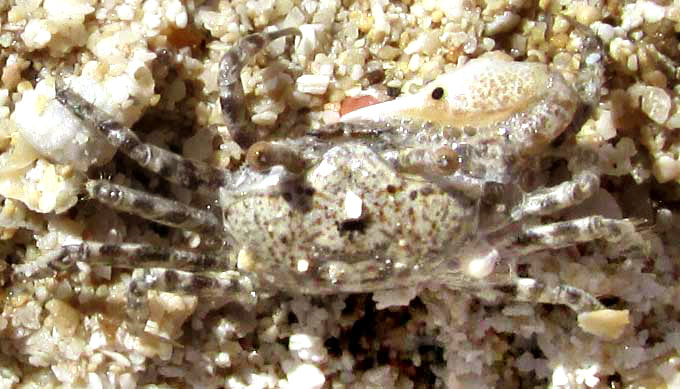Excerpts from Jim Conrad's
Naturalist Newsletter

from the January 18, 2015 Newsletter issued from Río Lagartos, on the Yucatan Peninsula's northern coast (~N21.60°, ~W88.16°), Yucatán state, MÉXICO
CRAB AT THE SALT PONDS
Up the estuary at the salt pans of Las Coloradas our flamingo-watching boat pulled up to a levee separating one of the ponds from the estuary, so guests could see the ponds' water, bright pink from algae, and marvel at the size of the operation. Stepping ashore onto sand composed of shell fragments, numerous tiny critters skittered from beneath my incoming foot, and I wondered what they might be. They ranged from pea-size to ant-size. A picture of a well camouflaged pea-size one with its big, white "fiddling" claw in the upper, right corner is shown above.
With such an oversize claw, clearly we had a fiddler crab, and all fiddler crabs belong to the genus Uca. However, about a hundred fiddler crab species are recognized worldwide, so how could I hope to identify this one? Happily, on the Internet, help came by way of a 1987 study by Carl Thurman II, published in Crustaceana Vol. 53, No. 1, entitled "Fiddler Crabs (Genus Uca) of Eastern Mexico (Decapoda, Brachyura, Ocypodidae)*."
*UPDATE: In 2024, I notice that our crab has its big claw on the wrong side to be what I thought it was. Even now with many more resources for identification I'm unsure of the species, but I'm guessing that it belongs to the Leptuca, a fiddler crab, but which one? Stay tuned.